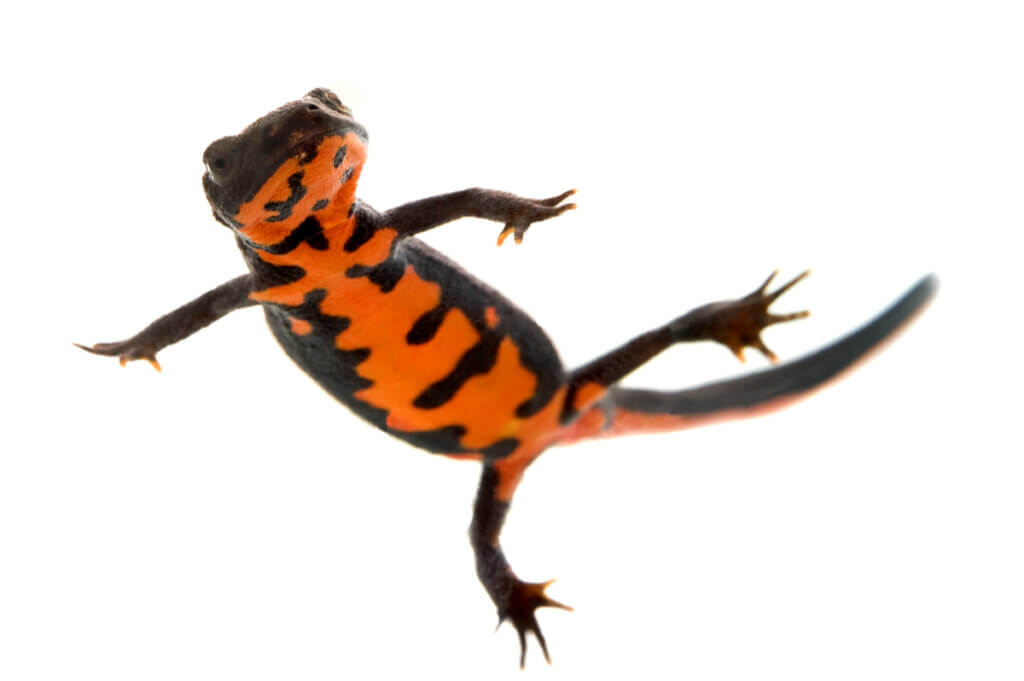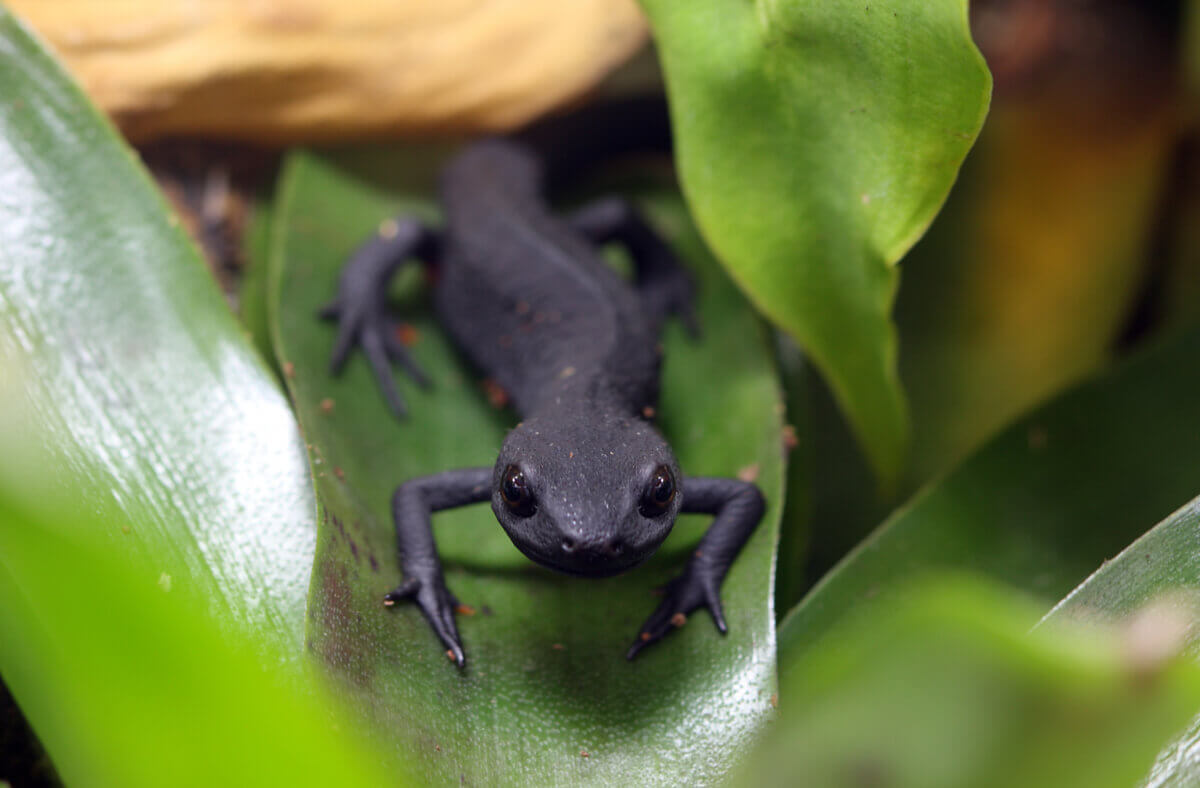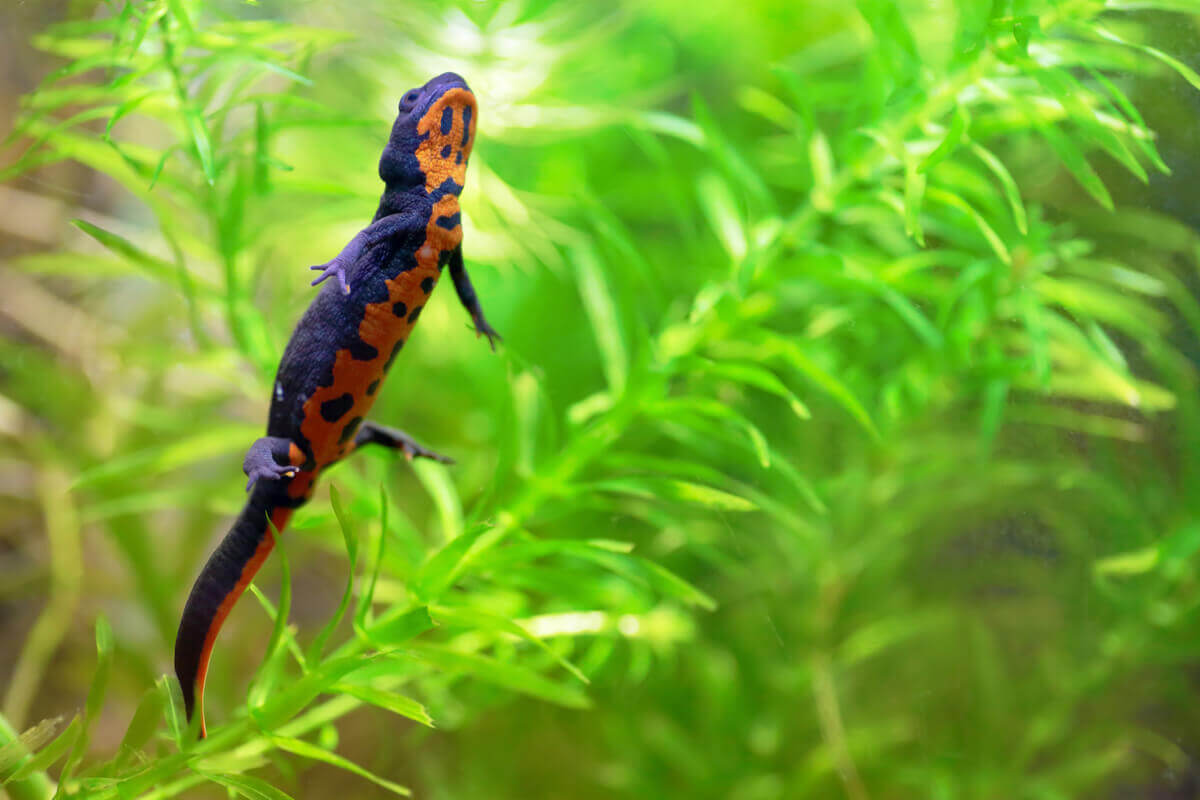The Fire Belly Newt: Care and Characteristics

The term “fire belly newt” refers to several species of aquatic salamanders, which have become popular as domestic pets in recent years. This is due, in part, to the fact that they’re easier to take care of than other exotic amphibians.
In spite of this, we can affirm that any reptile or amphibian requires more specific care parameters than the typical small domestic mammals. For example, hamsters or mice. Therefore, today we’re bringing you a guide that includes basic advice for the care of these fascinating salamanders.
A taxonomic conglomerate
One of the things that attracts the most attention when it comes to finding out about this newt is, without a doubt, the taxonomic chaos that it’s part of. Previously, the Cynops orientalis was the species most bred in captivity and commercialized. However, now it seems that this amphibian is actually part of the genus Hypselotriton.
At the same time, according to the American Museum of Natural History, today there are only two species of the genus Cynops. One is the Cynops pyrrhogaster and the other is the Cynops ensicauda. The genus Hypselotriton has more representatives, with eight documented species.
In any case, we’re dealing with a series of endemic newts from China or Japan, so their care in captivity is relatively similar. The coloration of all of them is brownish-black with an orange belly. And their size is about 2.4 to 4.75 inches–with variations according to the species.
In summary, we can list three species within this taxonomic conglomerate that have been bred in captivity and distributed by the exotic animal market. These are the following:
- Cynops pyrrhogaster: Be especially careful with this one, because it has a toxin that’s lethal for human beings.
- Cynops cyanurus.
- Hypselotriton orientalis: The most common when it comes to sales. It has a slightly toxic potential, so you have to be careful with its handling.

Care of the fire belly newt
Now that we’ve told you the different species available for purchase, it’s time to immerse ourselves in the world of their general care. First of all, we must emphasize that the fire belly newt is mostly aquatic. Therefore, its home will be more like a fish tank than a terrarium–another good option is a paludarium (a vivarium with terrestrial and aquatic elements).
You can place approximately two or three adults for every 40 liters of water. It’s important that the aquarium has a filtration system, as these amphibians require clear water free of toxic agents. Even so, it’s not good to use a filter that produces overly strong currents, as this can cause the animals to experience stress.
As far as temperature goes, these animals, in nature, live in cold environments. Therefore, the ideal range is from about 68 degrees to about 73 degrees Fahrenheit. They can withstand extreme temperatures of up to 80 degrees without problems. However, in the long term, this can deplete their immune system and promote the onset of disease.
These amphibians are strictly carnivorous, as they feed on invertebrates and small fish. Due to their small mouths, you can offer them food in pieces. In this sense, an ideal food for them is aquatic worms, which you can buy frozen into cubes, also known as tubifex.
A quick summary
As in many cases, time is short and it’s best to present information in small parts. So, we’ll provide a summary of the above:
- The fire belly newt is a relatively small and not very territorial amphibian. Therefore, a 40-liter aquarium can easily accommodate a couple.
- Despite being mostly aquatic, these animals require a section of earth.
- The aquarium must be abundantly planted and have an efficient filter system.
- Its ideal temperature range is 68 to 73 degrees Fahrenheit.
- They feed on mosquito larvae, worms, and almost any type of small invertebrate.

A matter of parameters
As we’ve seen, the fire belly newt depends on the temperature of the water and its chemical characteristics to develop properly. In addition, it requires plenty of plants, rocks, and shelters in order not to suffer continuous stress.
In spite of its demands, this amphibian is fascinating and the aquarium it lives in can look like a real lagoon ecosystem if mounted correctly. Of course, the aesthetic value of this animal is incalculable.
All cited sources were thoroughly reviewed by our team to ensure their quality, reliability, currency, and validity. The bibliography of this article was considered reliable and of academic or scientific accuracy.
- Amphibian species of the world, American Museum of Natural History. Recogido a 20 de octubre en https://amphibiansoftheworld.amnh.org/amphib/basic_search?basic_query=Cynops
- Cynops orientalis, Caudata Culture.com. Recogido a 20 de octubre en https://www.caudata.org/cc/species/Cynops/C_orientalis.shtml
